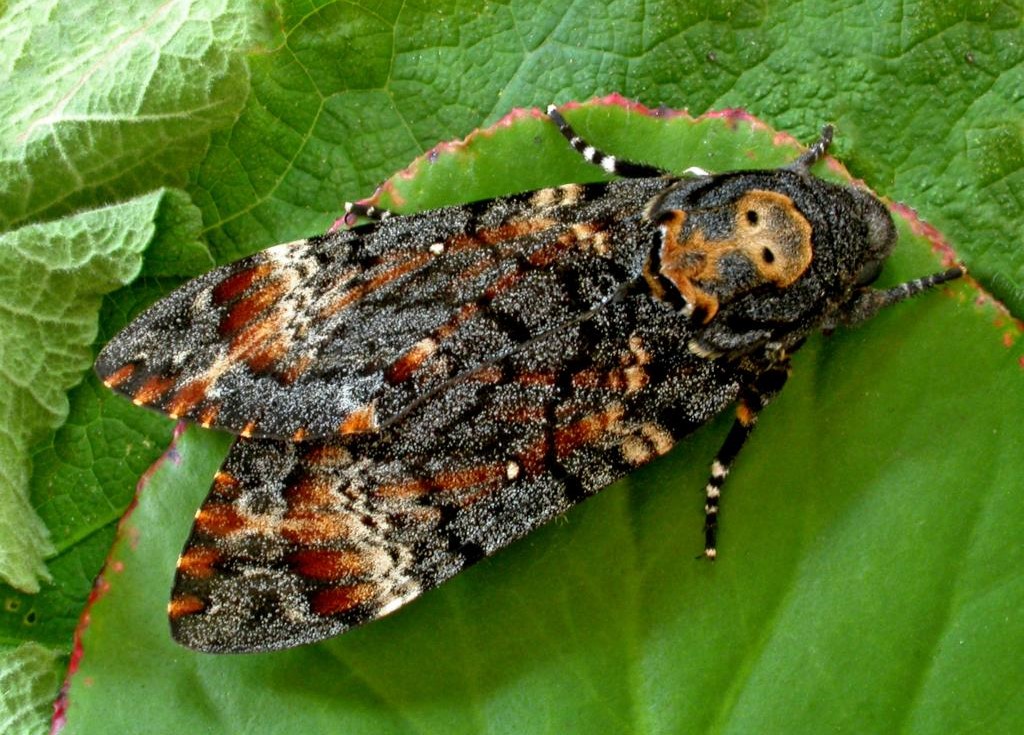Ready to dive in to the weird and wonderful world of moths? Here are our top ten freaky, fun and fascinating facts about these amazing creatures.
1) Some moths don’t look like moths.
Quite a lot of moths, and some caterpillars, look like bird poo to avoid being eaten – check out the Chinese Character. When the Elephant Hawk-moth caterpillar feels threatened, its body swells up to the shape of a snake's head with two huge black markings. Other moths mimic hornets, wasps, bumblebees, dead leaves, lichens, birch twigs, bark. All the world’s a stage…
2) Some moths are cannibals.
Like the majority of moth caterpillars, the Dun-bar tends to feast on salad. However, they have been known to enjoy a bit of cannibalism now and again. If given the opportunity, they will eat other moth caterpillars, including their own kind!
3) Moths are better pollinators than bees (sorry bees).
Moths play a key role in pollinating plants and flowers at night. In fact, recent research shows that they are more efficient pollinators at night than bees are during the day.
4) Aquatic moths – they’re a thing.
Move over Aquaman, the Aquamoths are here. There are four species of moth in the UK which are aquatic: the Brown China-mark, the Beautiful China-mark, the Ringed China-mark, and the Water Veneer. The caterpillars of these moths feed on pond plants and pupate just beneath the surface of the water or, in the case of the Water Veneer, up to 1m below the surface.
5) Sometimes, the only way to tell the difference between moth species is to check out their genitalia.
Some species of moth can look almost identical, while some adults of the same species can look completely different! Moths mate with a lock and key system, where only a very specific shape of genitalia of the male species will fit into the female. Makes for a unique quiz at the Butterfly Conservation Christmas party…
6) Moths can be noisy. Especially if you’re a bat.
Death’s-head Hawk-moths are able to produce squeaking sounds when they are alarmed. They suck air in, which causes a flap in their throat to vibrate and make a sound, then they expel it back out with the flap open to produce a second sound. They’re also capable of emitting ultrasonic sounds from their penis – because apparently, they weren’t already strange enough. Some tiger moths are also capable of producing ultrasonic pulses, a method which scientists believe help confuse bats and give the moths time to escape.
7) One species of moth is one of the best-known examples of evolution by natural selection.
Often referred to as ‘Darwin’s moth’, the Peppered Moth is a fascinating example of evolution by natural selection. The usual form of the Peppered Moth is pale with black speckles, but there is a naturally occurring genetic mutation, which causes some moths to have almost black wings. Fewer of these black or ‘melanic’ forms survive as they’re less well camouflaged against lichen and are more likely to be eaten. However, in the nineteenth century, industrialisation caused sooty air pollution, which killed off lichens and blackened urban tree trunks and walls. Now the pale form of the moth was more obvious to predators, while the melanic form was better camouflaged and more likely to survive and produce offspring. As a result, over successive generations, the black moths came to outnumber the pale forms in our towns and cities.
8) You can see moths at any time of the year.
Different species of moth are active across different months throughout the year, including mid-winter, so there’s always something to spot. Read all about winter-loving moths here
9) Some moths migrate thousands of miles to get to the UK.
Although most of the moths found in Britain are residents, others come to our shores as migrants from continental Europe or further afield. The Humming-bird Hawk-moth, for example, is a regular visitor to the UK between April and December and, incredibly, it comes to us all the way from the Mediterranean and even North Africa.
10) One moth’s dream in life is to be eaten by a bird.
Most moths tend to want to avoid being eaten by predators, but the female Bagworm Moth takes a slightly different approach. She has no wings and lives her whole life in a silken case. After mating, she puts on a show by poking her head out of her case and wiggling it around to get the attention of a passing bird with the hopes that she’ll be eaten. That way, her eggs are dispersed in the bird’s droppings. Wild!
As part of Butterfly Conservation’s Moths Matter campaign, we'll be celebrating all things moth over the next few months.
Look out for the #MothsMatter hashtag on social media to get involved


